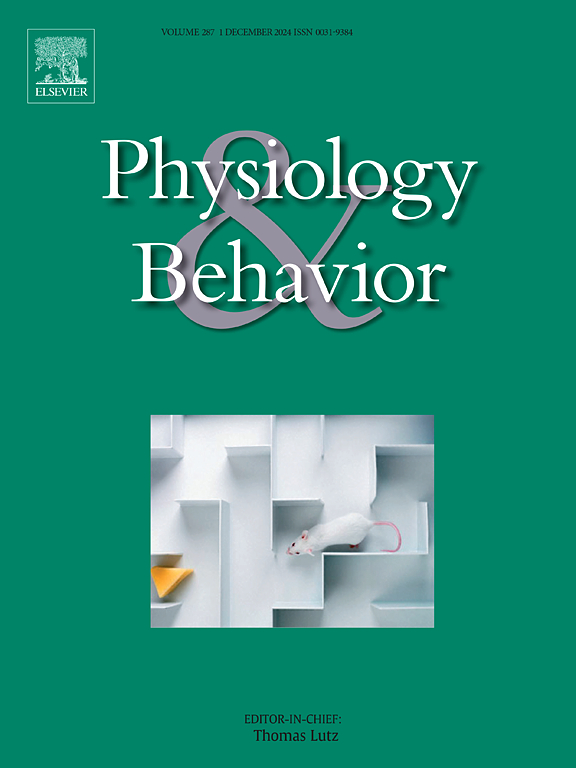Enhanced behavioral assays in adult Zebrafish using an LED-based experimental tool
IF 2.5
3区 医学
Q2 BEHAVIORAL SCIENCES
引用次数: 0
Abstract
Animals, which serve as models in human behavior and neuroscience research, offer invaluable insights into the intricate systems that underpin our actions and cognitive processes. Among the diverse array of organisms utilized in such studies, zebrafish are particularly promising subjects for behavioral experimentation. Although various behavioral assays have been developed to analyze neurological abnormalities in adult zebrafish, including anxiety, fear responses, cognitive impairment, and social interaction deficits, these assays are limited by numerous factors, including the spatial constraints of traditional cage setups, variability in experimental techniques, and the impact of animal handling on behavioral outcomes. To address these limitations, we developed a screen-based behavioral tool featuring LED displays positioned on either side of the experimental enclosure. Subsequently, we conducted a series of behavioral analyses, including assessments of learning, social interaction, fear, and preference in adult zebrafish, using this cutting-edge behavioral apparatus. This new approach effectively alleviates spatial constraints by projecting stimuli onto a screen and standardizing the experimental conditions across multiple researchers. Moreover, the screen-based setup minimized experimenter interference within the testing environment, ensuring improved consistency and objectivity in data collection. By overcoming traditional constraints and simplifying experimental procedures, this innovative approach marks a new era in behavioral research, enabling deeper insight into the complex mechanisms of behavior and cognition.
使用基于led的实验工具增强成年斑马鱼的行为分析
动物作为人类行为和神经科学研究的模型,为我们了解支撑我们行为和认知过程的复杂系统提供了宝贵的见解。在这些研究中使用的各种生物中,斑马鱼是特别有前途的行为实验对象。尽管已经开发了各种行为分析方法来分析成年斑马鱼的神经异常,包括焦虑、恐惧反应、认知障碍和社会互动缺陷,但这些分析方法受到许多因素的限制,包括传统笼子设置的空间限制、实验技术的可变性以及动物处理对行为结果的影响。为了解决这些限制,我们开发了一个基于屏幕的行为工具,其特征是位于实验外壳两侧的LED显示屏。随后,我们进行了一系列的行为分析,包括评估成年斑马鱼的学习,社会互动,恐惧和偏好,使用这种尖端的行为仪器。这种新方法通过将刺激投射到屏幕上,并在多个研究人员之间标准化实验条件,有效地缓解了空间限制。此外,基于屏幕的设置最大限度地减少了测试环境中实验者的干扰,确保了数据收集的一致性和客观性。这种创新的方法克服了传统的限制,简化了实验程序,标志着行为研究进入了一个新的时代,使人们能够更深入地了解行为和认知的复杂机制。
本文章由计算机程序翻译,如有差异,请以英文原文为准。
求助全文
约1分钟内获得全文
求助全文
来源期刊

Physiology & Behavior
医学-行为科学
CiteScore
5.70
自引率
3.40%
发文量
274
审稿时长
47 days
期刊介绍:
Physiology & Behavior is aimed at the causal physiological mechanisms of behavior and its modulation by environmental factors. The journal invites original reports in the broad area of behavioral and cognitive neuroscience, in which at least one variable is physiological and the primary emphasis and theoretical context are behavioral. The range of subjects includes behavioral neuroendocrinology, psychoneuroimmunology, learning and memory, ingestion, social behavior, and studies related to the mechanisms of psychopathology. Contemporary reviews and theoretical articles are welcomed and the Editors invite such proposals from interested authors.
 求助内容:
求助内容: 应助结果提醒方式:
应助结果提醒方式:


